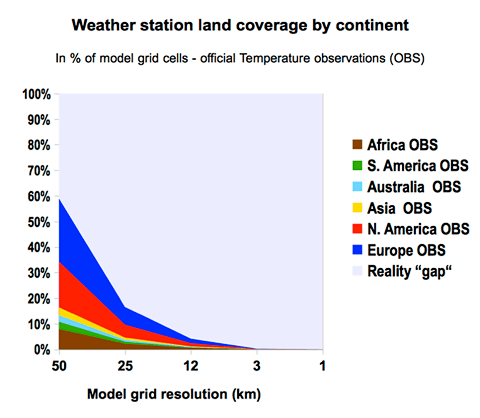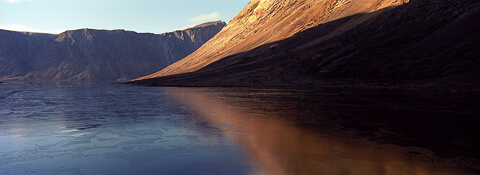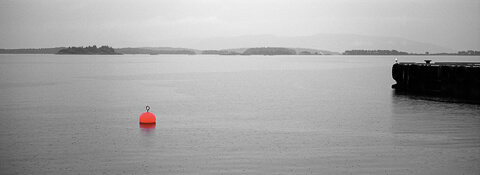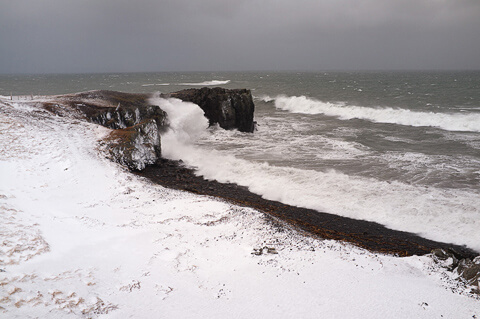In Plain Light 03.18 – The Weather Issue:
How to Forecast Weather
Welcome to this month's newsletter!
In this issue:
- A short history of weather forecasts
- How to forecast weather—the special way
- Configurable weather widget for any place
- Links
You may want to rotate your phone in order to improve your browsing experience on this site.

In this issue, we'll try to explore how to predict weather and what tools to use for its forecast, both short- and long-term, anywhere in the world. After all, you never know where your next holiday will bring you, do you?
The topic drew my attention when I was planning my autumn holiday and trying to tell what weather to expect during its course. By chance, I stumbled upon a site which not only answered all my questions, but also provided a whole lot of other useful information.
Thus, this issue came into being.
All kinds of weather
In the beginning, weather was of little interest. Sure, hunters and gatherers could tell hunch-weather from its counterpart, but it was of little sense to contemplate it—wishing for better weather was the most they could do.
This changed when nomadic tribes started to settle and turn to agriculture—the very survival of man depended on weather. Predicting it and its effect on the annual crop became vital for survival.
In this time, people began to observe weather and its patterns trying to deduct rules which should tell how productive the summer season would be and what to expect from the coming winter, as early in the year as possible.

This approach still holds true today. To forecast local weather, we need to know how it is now, and how it used to progress from the same conditions in the past. A usual weather forecast became a matter of statistics.
The only catch is, weather statistics are scarce.
Small data
Statistics is only useful when it has a large data base. Alas, there are just about 10,500 stations gathering meteorological data for weather forecasting around the world.
This amounts to one weather station for 14,185 km2, or 5,475 sq. mi, of land mass on average. Had they be evenly spread, the neighbours would stand 130 km (80 mi) apart.
The average distance between 182 weather stations in Germany is 50 km (30 mi). Since the last weather ship has retired in 2010, close meteorological observations on the open sea are conducted solely by weather buoys. There exist 1,250 drifting ones and a couple dozen of the moored variety (France owns four).
This is hardly enough to reliably predict weather for every place in-between. The reality is even more sobering—this is how weather stations cover the world:
 Image by meteoblue
Image by meteoblueWith so little data from so few places available, how would you build statistics to forecast weather anywhere on the planet?
Enter weather 3.0.
Make it big
So, how would you extend the data base for your statistics? Well, by applying existing forecast models to fill the gaps.
This is the exact approach used by the Swiss company meteoblue. Starting with the real observation data, expanding it to places with the similar conditions, and using approved models to simulate meteorological events in the adjacent areas, the engineers are able to forecast weather in every place on Earth.
Consequently, they also applied this method to the available historical data, and created a unique database of weather simulations for each point in the world reaching 30 years into the past.
This accumulated data—however unconfirmed and uncertain it appears—is, surprisingly, enough to describe climate and reliably forecast weather anywhere on the planet.
The company routinely compares its forecasts with weather measurements, and verifies the former against the latter to further fine-tune its models. The comparison results are made available to both customers and the general public, and currently read as follows:
- over 80% of temperature values predicted within 12 hours differ less than 2°C from the measured temperature
- for predictions within 3 days, the above is true for over 70% of values
- 75% of precipitation events with over 2 mm, and 85% of those with over 5 mm are correctly forecast 3 days in advance
- this also applies to forecasts for days without such events
- 70 to 80% of meteoblue wind forecasts up to 48 hours in advance match measured speeds
- the average absolute wind speed deviation is less than 2 m/s in 96% of cases
The fun part
These forecasts are appreciated by professionals and amateurs alike in areas where conventional methods are not available or applicable. And they can do so much more:
- locate places with the most favourable weather at a given time in a given area, like around your holiday retreat
- make seasonal predictions with regard to deviations from existing weather patterns, like how much warmer and drier the coming summer will be—or how cooler and wetter
- offer insights into the typical weather around the year at every possible holiday destination
- provide wave forecasts for surfing aficionados, air quality forecasts for city dwellers, and pollen forecasts for allergy sufferers
- support weather widgets in different formats for every place in the world, no matter whether on land or sea, populated or unreachable
Apropos widgets: Here is an example.
The widget is intended to show the weather forecast for a place in the vicinity of your whereabouts. The exact location should correspond to where Google Maps would open if you were to launch it. Depending on your position, this could be quite far away. In this case, alternative services will be invoked and averaged. As a fallback, the widget will work it out on its own, though my tests were rather disappointing in this regard.
Another bit of explanation for the above comment: The first point of call for your location is Google's Geolocation API. If its verdict is sure enough, it will suffice to configure the widget. If it is not, three other web services, all using different sources, are called to estimate your coordinates based on your IP address. Their results, and that from Google are mixed together to calculate an approximate geographic position which, in order, is used to find the populated place nearest to it. The widget is then set up to forecast the weather in this location.
In a certain regard, this is in line with the principles the company applies to make their weather forecasts.
The IP based geolocation is a topic in itself worth a dedicated coverage. Please comment below if you are interested in its closer discussion—or to share your experience with its application on this particular page.
If you manage a website or a blog dedicated to a specific place, be it your native town or a fashionable tourist destination, consider configuring the widget for your visitors—it is quite easy, and free!
Before you do, be sure to read and follow the requirements for hosting sites.
As to the long-term weather forecast for my holiday destinations from the introduction, the current outlook is quite favourable, showing the trend to be warmer and drier than usual. I know this is unreliable at this time, but I also know where to look for changes should they occur in the coming months!
Useless knowledge: Weather-proof
The oldest, still active weather station in the world is located in Upper Austria within the Kremsmünster Abbey, a Benedictine monastery.
 Kremsmünster Abbey with its observatory on the left
Kremsmünster Abbey with its observatory on the leftImage by H. Raab, via Wikimedia Commons
The monastery was founded in 777 AD by Tassilo III, the Duke of Bavaria, on site of his son's hunting accident involving a wild boar, as the legend has it.
An observatory built on the premises between 1749-58 became one of the first European skyscrapers rising 49 m above the ground and with another 5 m below, for a total of 59 yd.
The weather station was added in 1762, and started its observations in the following year. Since 1767, it has been keeping temperature recordings in one unprecedented series without interruption.
Guided tours of the observatory are possible from May to October. In winter, the unheated building remains closed.
The last page
The weather be with you…Tags: #inplainlight #howtoforecastweather #weatherwidget
Unattributed images on this page are sourced from public domain via Pixabay.
🌦
Links
- meteoblue
- For everything about weather anywhere in the world, there is no better destination. Study past simulations or future forecasts, create your own widgets or browse maps—it's all online, and much of it for free.
- The Observatory of Kremsmünster
- A short presentation of the building and its history in English on the otherwise German site.
- In Plain Light 07.17 – The numbers issue
- This older newsletter issue explores how statistics come about, and what they really mean.
Previous issue
- 02.18 – The Words Issue: Photography definitions
- Do words fail you? Fear no more, this handy collection ex-plain-s some obscure photography speak and makes it clear again.
Following issue
- 04.18 – The Magic Issue: Best Adobe Photoshop tips
- We recall some Photoshop basics, like layers, and proceed with more advanced topics, like masks, selective channel editing, converting colour to black and white, and output sharpening.
Tell me what you think!
Is it useful 👍? Awful 👎? Leave a message! Your comments help make this site better (and give me a kick—one way or another).
Popular articles
-
A kind of magic
If a digital picture has to be seen in the real world, printed on a real medium and displayed in a real showcase, its transition from RAW to real is better done in an old school image editor. Enter A…
-
A duck for a dog
If you got your own place on the Internet, helping your visitors find what they are looking for is a great way to engage them and keep them staying a bit longer. A custom site search can achieve just …
-
"Might as well have the best"
Aiming for better images? Think better lenses! This is your most important piece of gear, so you better get it sorted out. — Need some advice?



 Become a patron for
Become a patron for